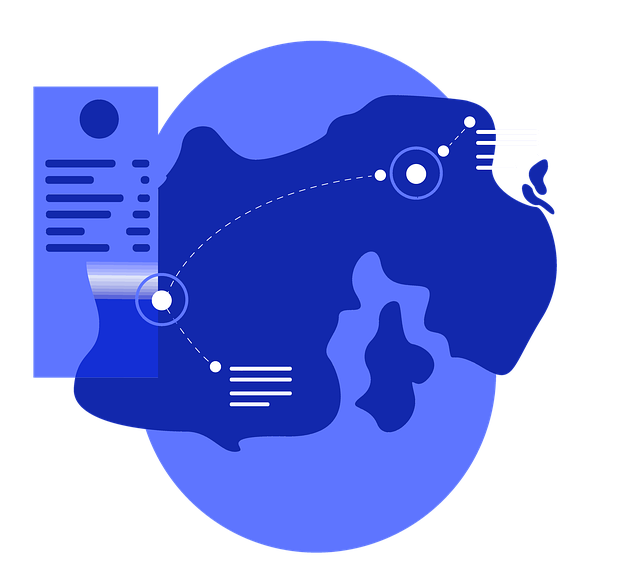SEO internal links tools optimize website structure by identifying relevant content for interlinking, enhancing crawlability and user experience. These tools streamline content creation, analysis, and optimization, balancing SEO and user engagement. By tracking metrics like click-through rates, tools enable strategic adjustments to link structure, improving search rankings over time. Advanced techniques, such as varied anchor text and contextual linking, reinforce website authority and engage readers.
“Unleash the power of your website with a comprehensive guide to SEO internal linking—a strategy that can significantly enhance user experience and search engine optimization. This article caters to beginners, offering an accessible introduction to the fundamentals of internal linking and its numerous benefits. We explore effective tools like SEO internal links tools, provide actionable strategies for implementation, and share insights on measurement and advanced optimization techniques. Get ready to transform your website’s structure into a powerful SEO asset.”
- Understanding Internal Linking in SEO
- Benefits of Using an SEO Internal Links Tool
- Choosing the Right Internal Linking Strategy
- Implementing Internal Links on Your Website
- Measuring Success with SEO Analytics
- Advanced Tips for Optimal Internal Linking
Understanding Internal Linking in SEO

Internal linking is a fundamental aspect of Search Engine Optimization (SEO) that connects relevant pages within your website to improve user experience and search engine visibility. It’s a strategic process of using hyperlinks to guide users and search engines through your site, allowing them to navigate easily from one page to another. By implementing SEO internal links, you can enhance the overall structure of your website, making it more crawlable and understandable for search engine algorithms.
An effective SEO internal links tool helps identify opportunities to link relevant content together. These tools analyze your website’s architecture and provide insights into which pages could benefit from internal links. It offers a strategic overview, allowing you to create a seamless user journey while optimizing your site for better rankings. Remember, when executing SEO internal links tips, ensure that each link is contextually relevant, adds value to the user’s experience, and contributes to the overall optimization of your website.
Benefits of Using an SEO Internal Links Tool

For beginners stepping into the world of SEO, implementing an SEO internal links tool can be a game-changer. This powerful resource streamlines the process of creating strategic internal links, which are vital for improving website navigation and boosting search engine rankings. By utilizing such tools, users can effortlessly identify relevant pages to link within their content, enhancing overall user experience.
An SEO internal links tool offers numerous advantages. It assists in creating a robust link structure that helps search engines understand the hierarchy of information on your site. This optimization ensures that both users and search algorithms can navigate through your website with ease. Moreover, these tools often provide valuable insights into keyword suggestions, allowing beginners to create more effective content strategies. Through automated processes and intuitive interfaces, they simplify complex SEO tasks, making it easier for newcomers to master the art of internal linking.
Choosing the Right Internal Linking Strategy

When crafting an internal linking strategy for your website, it’s crucial to consider both user experience and SEO. A successful approach balances the two by creating a logical structure that guides users and search engines alike. Start by identifying key pages based on their relevance and importance within your site’s hierarchy. Utilize an SEO internal links tool to analyze existing connections and uncover potential opportunities. These tools can help you understand how your website is currently performing in terms of internal linking, revealing high-value pages that deserve more interlink support.
Remember, a good strategy isn’t just about placing links willy-nily; it’s about optimizing for both user navigation and search engine visibility. Use anchor text effectively, ensuring it’s descriptive and relevant to the linked page. This not only enhances click-through rates but also signals to search engines the context of your internal links, contributing to SEO internal links optimization.
Implementing Internal Links on Your Website

Implementing internal links on your website is a crucial step in enhancing its SEO and user experience. It’s an essential part of any SEO internal links tutorial, guiding beginners to create a strategic network of links that connects relevant pages within their site. Using an SEO internal links tool can simplify this process, allowing you to easily identify content that would benefit from linking and track the impact of your optimization efforts.
A well-crafted SEO internal links strategy involves carefully selecting anchor text and targeting specific pages based on relevance and authority. This is where the real value of an SEO internal links tutorial becomes apparent—it teaches beginners how to create a natural, contextual flow of links that not only improves search engine visibility but also encourages users to explore more of your site. Remember, optimal internal linking is about fostering a seamless browsing experience while leveraging the power of your own website content.
Measuring Success with SEO Analytics

Measuring success is a vital part of any SEO strategy, and when it comes to internal linking, dedicated SEO internal links tools can provide invaluable insights. These tools allow you to analyze how your internal link structure is performing, helping you understand user behavior and improve your overall SEO internal links strategy. By tracking key metrics such as click-through rates (CTR) and time spent on page, you can identify high-performing pages and those that need optimization.
Using these analytics, you can refine your SEO internal links tips and ensure the content is not only internally linked effectively but also aligns with user preferences. Regularly reviewing and optimizing your internal linking strategy based on data will enhance your site’s visibility and user experience, ultimately contributing to better search engine rankings over time.
Advanced Tips for Optimal Internal Linking

For optimal SEO internal links strategy, beginners should consider advanced tips like using anchor text variations to avoid repetition and enhance link diversity. Tools like SEO internal links tools can help identify relevant pages for linking, ensuring a strategic approach that aligns with your content’s hierarchy and user experience.
Additionally, focus on contextual linking where each internal link has a clear purpose, providing value to readers by guiding them to related or complementary content. This not only improves user engagement but also reinforces the overall SEO internal links tips of your website. Prioritize high-quality, relevant backlinks from within your site’s architecture to boost page authority and search rankings.
